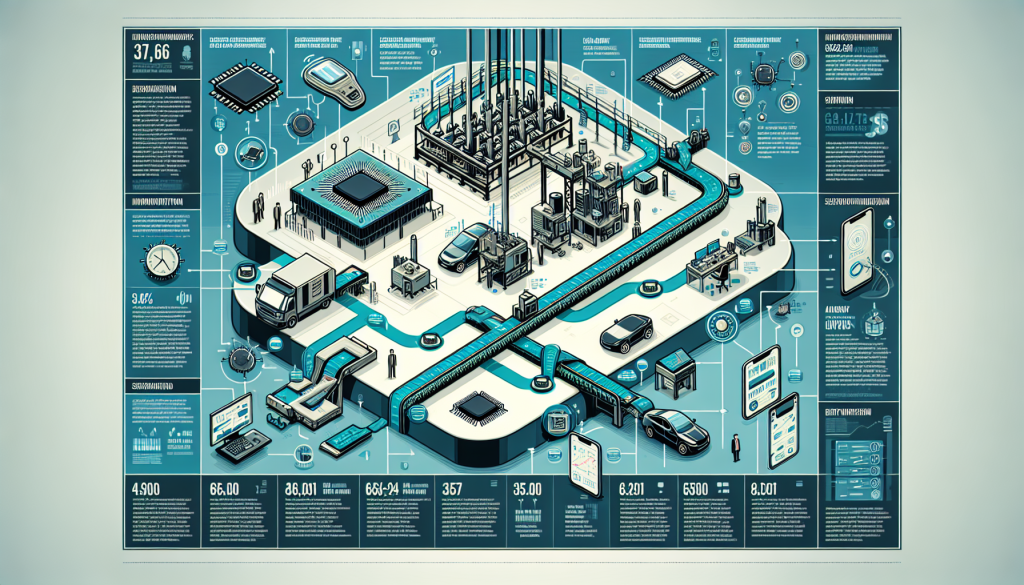
The Chip Shortage Crisis Explained
The Chip Shortage Crisis Explained: What You Need to Know
In recent months, news headlines have been dominated by reports of a global semiconductor shortage, causing delays and disruptions across industries. From automobiles to consumer electronics, the shortage of computer chips has had a significant impact on various markets, and the effects are still being felt today.
But what exactly is a chip shortage, and how did it come about? In this article, we’ll delve into the details and explain the chip shortage crisis, its causes, and how it is affecting businesses and consumers worldwide.
What is a Chip Shortage?
Before we dive into the crisis itself, it’s crucial to understand what a chip shortage is. In simple terms, a chip shortage is a shortage in the supply of semiconductors, also known as computer chips.
Semiconductors are essential components found in various electronic devices, including smartphones, laptops, cars, and even household appliances. They are the brains of these devices, performing millions of calculations within seconds, and enabling them to function.
However, the production of semiconductors is a complex and time-consuming process, which means that demand often outstrips supply.
The Causes of the Chip Shortage Crisis
The chip shortage crisis has been attributed to a combination of factors, both short-term and long-term. One of the primary drivers of the shortage is the unexpected surge in demand for semiconductors.
As the world shifted to remote work and online learning during the pandemic, the demand for laptops, tablets, and other electronic devices skyrocketed, leading to increased demand for semiconductors. At the same time, the automotive industry, which also relies heavily on semiconductors, experienced a decline in demand due to the decrease in car sales during the pandemic.
However, as the world started to reopen and car sales picked up, the demand for semiconductors surged once again, causing a supply chain bottleneck. This demand-supply mismatch has been one of the primary drivers of the current chip shortage crisis.
Additionally, the semiconductor industry is highly concentrated, with a few key players dominating the market. As a result, any disruption from these manufacturers, such as natural disasters or factory closures due to the pandemic, significantly impacts chip supply.
In recent years, there has also been a significant increase in demand for semiconductor chips from new technologies, such as 5G, artificial intelligence, and the Internet of Things. This long-term trend has put additional strain on an already stretched supply chain, contributing to the current crisis.
The Impact of the Chip Shortage
The chip shortage crisis has had far-reaching consequences, affecting various industries and businesses. Perhaps the most visible impact has been on the automotive industry.
For automakers, computer chips are crucial components used in various systems, such as driver assistance features, navigation, and infotainment. The shortage has forced some car manufacturers to pause production, leading to significant delays in the delivery of new vehicles.
The shortage has also affected the availability of popular consumer electronic devices such as gaming consoles, smartphones, and tablets. As a result, many brands have had to push back product launches or limit the quantities available.
Overall, the chip shortage crisis has caused a ripple effect throughout supply chains, leading to delays in production, increased prices, and potential long-term consequences for businesses of all sizes.
What’s Being Done to Address the Crisis?
Governments and industry players have been working to address the chip shortage crisis. The US recently announced a $50 billion investment in semiconductor manufacturing, with the aim of boosting domestic production and reducing reliance on imports.
Manufacturers have also been ramping up production and investing in new facilities to increase their chip output. However, it may take some time before the supply-demand balance is restored.
In Conclusion
The chip shortage crisis is a complex issue that has been exacerbated by a perfect storm of factors. It highlights the importance of having a diverse and resilient supply chain, as well as the need for governments and businesses to invest in domestic production capabilities.
As we navigate this crisis, it’s essential to stay informed and adapt to the changing landscape to minimize its impact on our businesses and daily lives.
Hopefully, this article has given you a better understanding of the chip shortage crisis and its causes. By keeping a close eye on developments and working together, we can overcome this challenge and build a stronger and more robust semiconductor industry for the future.
